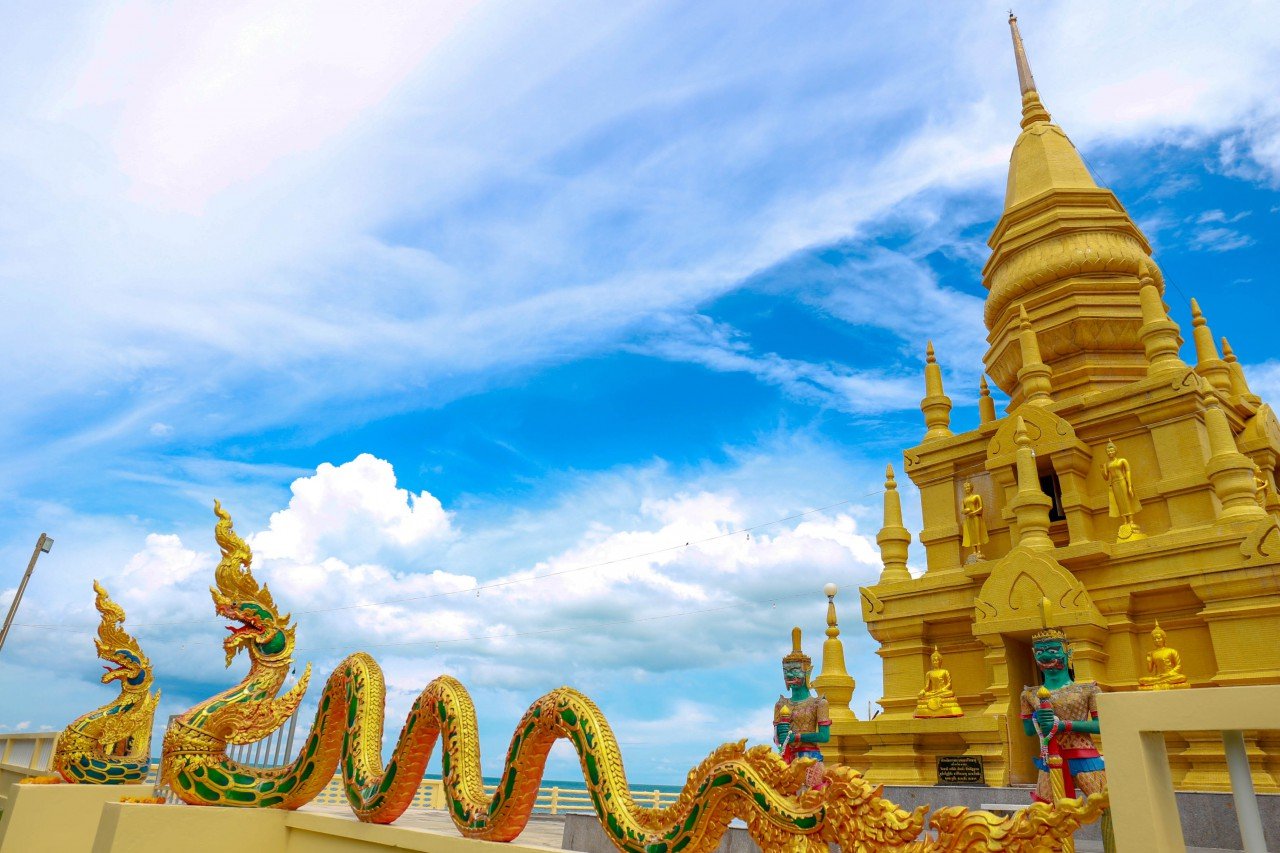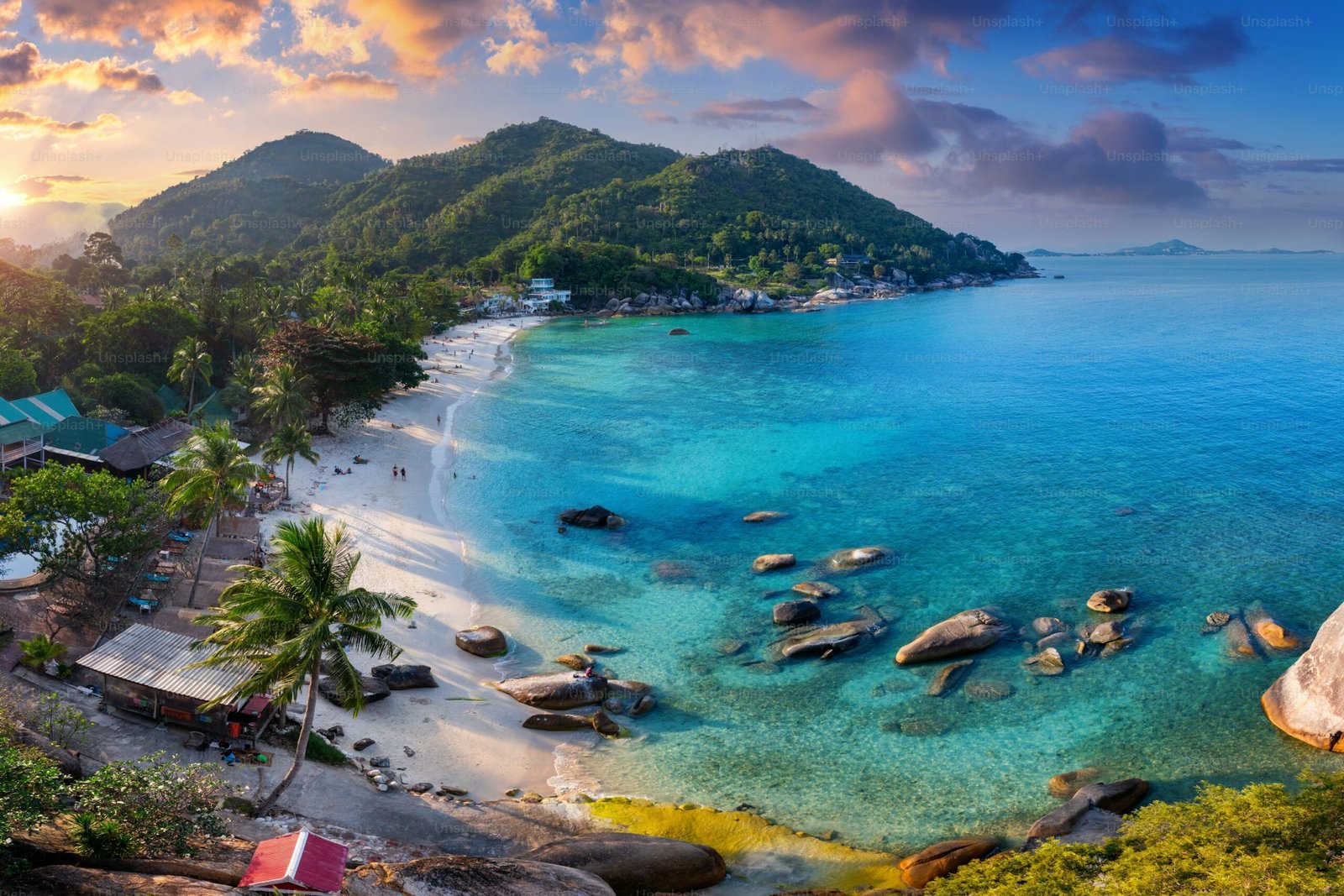Exploring the History of Koh Samui
A Tropical Island with a Rich Past
Discover Koh Samui’s Climate
A Tropical Island with a Rich Past
Koh Samui, often celebrated for its turquoise waters and palm-fringed beaches, has a history as vibrant and fascinating as its landscapes. Once a quiet, remote island, it has transformed over centuries into one of Thailand’s most sought-after tourist destinations. This article delves into Koh Samui’s historical roots, offers recommendations for visitors, and highlights must-visit historical attractions that bring the island’s past to life.
The Historical Roots of Koh Samui
Koh Samui’s recorded history dates back over 1,500 years when it was first settled by Malay and Chinese fishermen. Evidence of these early settlers can still be seen in the cultural influences found throughout the island. The name “Samui” itself has origins that remain debated; some believe it derives from the Malay word “saboey” (safe haven), while others argue it stems from a native tree species once abundant here.
For centuries, Koh Samui existed in relative isolation. With no roads until the 1970s, it was accessible only by boat, and locals primarily relied on fishing and coconut farming for their livelihood. In fact, the island was once nicknamed the “Coconut Island” due to its thriving coconut trade. To this day, the sight of towering coconut palms and traditional wooden boats serves as a nostalgic reminder of its humble beginnings.
The tourism boom arrived in the 1980s, when backpackers stumbled upon this hidden paradise. Word spread, and Koh Samui quickly became a favorite for travelers seeking unspoiled beaches and authentic Thai culture. Despite its rapid development, the island retains much of its historical charm and traditions.

Interesting Historical Attractions in Koh Samui
Wat Phra Yai (Big Buddha Temple)
A visit to Koh Samui isn’t complete without seeing the iconic Big Buddha. Built in 1972, this 12-meter-tall golden statue is perched on a small island connected to Koh Samui by a causeway. While not ancient, the temple is a testament to the island’s Buddhist roots and offers sweeping views of the surrounding sea.


Wat Khunaram
This serene temple is home to one of the island’s most fascinating cultural relics—the mummified monk, Luang Pho Daeng. Preserved in a meditative pose, this monk serves as a powerful reminder of the island’s spiritual traditions.
Fisherman’s Village in Bophut:
Once a thriving hub for the island’s fishing trade, Fisherman’s Village has retained its old-world charm. The wooden shopfronts, narrow streets, and remnants of Chinese-Malay architecture make it a living museum of Koh Samui’s past. Every Friday, the area transforms into a vibrant walking street market with local crafts and food stalls.


Secret Buddha Garden:
Tucked away in the hills of Koh Samui, this enchanting site was created by a local farmer in the 1970s. The garden features intricate statues depicting Buddhist and folklore scenes, set against lush greenery. The journey to this secluded spot offers breathtaking views of the island.
Laem Sor Pagoda:
Located on the southern tip of Koh Samui, this golden pagoda by the sea exudes a peaceful, timeless charm. It’s a wonderful place to reflect and enjoy the serene atmosphere while soaking in the history of Buddhist devotion on the island.

Enjoying Koh Samui’s Climate
Recommendations for Visitors Exploring Koh Samui’s History
To truly appreciate the island’s heritage, it’s worth stepping beyond the beaches and diving into Koh Samui’s cultural and historical attractions. Here are some tips to make the most of your visit:
-
- Visit Historical Landmarks: Seek out spots that showcase Koh Samui’s history, from ancient temples to traditional fishing villages.
- Connect with Locals: Engage with local artisans or coconut farmers to learn firsthand about the island’s traditions and history.
- Take a Guided Tour: History tours led by knowledgeable locals can offer deeper insights and stories that you won’t find in guidebooks.
- Explore Off the Beaten Path: While Koh Samui is famous for its resorts, venturing into less-traveled areas will reveal hidden cultural gems.
Preserving History in a Modern Paradise
Despite its rapid growth into a global travel hotspot, Koh Samui has managed to preserve much of its historical identity. Traditional festivals, such as Songkran (Thai New Year) and Loi Krathong, continue to be celebrated with enthusiasm, offering visitors a chance to connect with the island’s rich cultural heritage.
Koh Samui’s history is not just about its landmarks—it’s woven into the daily lives of its people. From the fishermen casting their nets at dawn to the monks chanting in ancient temples, the island’s past and present coexist harmoniously.


Why Koh Samui’s History Matters
Koh Samui’s history adds depth and character to an already captivating destination. Beyond the luxury resorts and Instagram-worthy beaches, the island’s heritage offers travelers a chance to connect with its soul. By exploring its historical attractions, engaging with its people, and respecting its traditions, visitors can experience Koh Samui in a way that’s both enriching and unforgettable.
Whether you’re a history enthusiast or simply curious about the stories behind the beauty, Koh Samui’s past will leave you inspired. Pack your bags, dive into its history, and discover the layers of culture that make this island more than just a tropical paradise.
